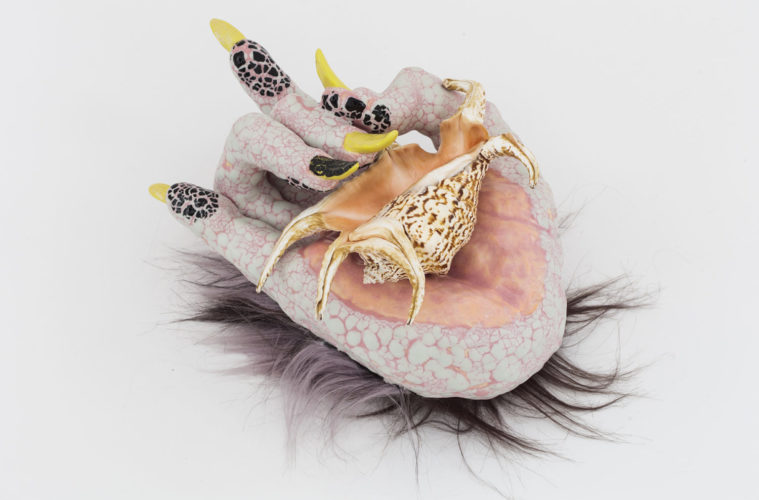Clay is having a moment, both as a cultural trend and as a field within the arts. More and more hobbyists are seeking out pottery as a creative and therapeutic activity. And in the professional sphere, inventive ceramicists are blurring the traditional divisions between commercial and conceptual work in clay.
Craft Contemporary celebrates this movement in their second clay biennial, “The Body, The Object, The Other,” a lively mélange sprawled across the museum’s three floors. As reflected in their recently changed name, the museum focuses on modern craft, recognizing art forms that have long been siloed as distinct from — and inferior to — fine arts. However, contemporary art is less focused on the divisions between mediums, as many artists now experiment across multiple forms. (Whether this is always to great effect is another matter.)
The museum’s biennial brings together a diverse range of artists working through the heady concepts of body, object and other in clay. “We’re going back to the body as a way to incorporate marginalized voices,” says Caroline Liou, communications manager at Craft Contemporary. It was important for them to represent “many bodies” in this biennial, she says, and they have succeeded admirably.
The medium is also a natural choice for the subject matter. Clay responds to the shaping and imprinting of the body, encapsulating the relationship of subject and object; self and other. As co-curator along with Andres Payan Estrada, Holly Jerger, puts it, “The malleability of clay lends itself to the malleability of the concept.”
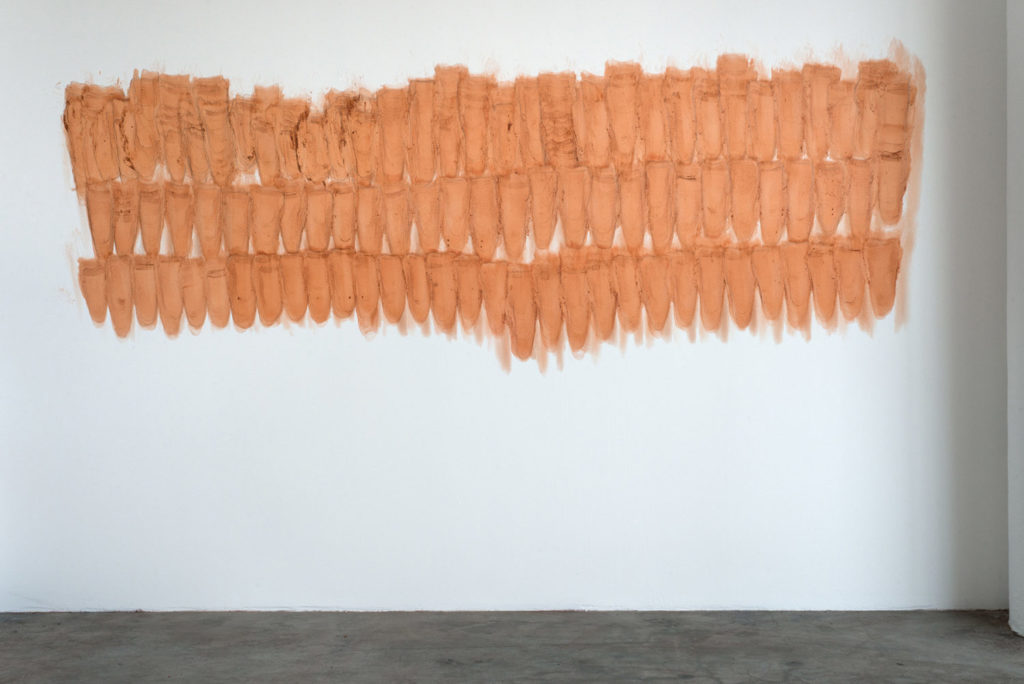
Nicole Seisler, Preparing (Craft Contemporary)
Whether dealing with the final body of work or the artist’s body, the pieces in the show illustrate myriad ways of interpreting the metaphor. Artist Nicole Seisler’s contribution, “Preparing,” involved wedging each piece of clay 100 times against the wall, leaving patterns of clay residue that were continued by her students — and will continue to be added to throughout the show. Seisler describes wedging, an intensive kneading process that removes air bubbles from clay, as a kind of “signature” for each clay artist. Because of the physical demands of wedging in an unusual posture, she says, “I became a lot more aware of my own body making that work.” The physicality of the work and the visible difference between her wedging and her students’ is another way of marking the distinctions between bodies even within the same form.
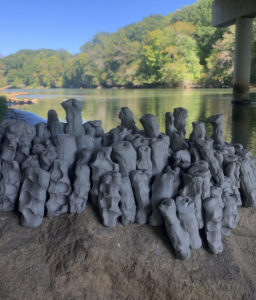
Cannupa Hanska Luger, Something To Hold Onto (Craft Contemporary)
Cannupa Hanska Luger’s “Something To Hold Onto” is also a collaborative work, emphasizing the distinctive elements each human brings to the medium — and how clay can represent us as individuals. There is something visceral about the squeezed handprints in his piece: the visible pressure in the soft clay, and the negative space left by the warmth of a hand. Luger says he aims to “rehumanize data” with this project, using each handprint-bead to represent each of the bodies found at the U.S.-Mexico border.
Official statistics reported 7,209 bodies over 20 years, with roughly a third of them found on the land of the Tohono O’odham Nation. The actual number is likely much higher. The beads will eventually be strung across steel pylons as part of a larger installation called “Passage.” A closed fist has long been a sign of protest. Instead of representing that icon, Luger has captured the gesture itself — the act of holding on, of resisting. Luger’s is the most politically engaged of the pieces in the biennial, and highly effective in its immediacy.
The force required to shape clay, the push-and-pull between body and object, is a driving force of the show. It surfaces again in Cassils’ “Ghost,” a darkened room with a clay floor and the soundtrack of the artist’s sounds as they attacked a 2,000-pound block of clay in an earlier work, “Becoming an Image.” It’s an interesting and eerie experience of almost-sensory deprivation. Each visitor will leave an imprint on the floor, soon to be tracked over by others, the landscape constantly re-molded and impermanent.
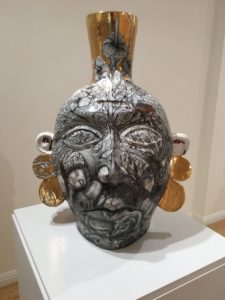
Gerardo Monterrubio (Craft Contemporary)
While these pieces emphasize the imprint of the body, other artists took the brief more literally. Danish artist Anders Herwald Ruhwald created a gorgeous interplay of body parts between his oversized ears on the wall and the standing sculptures “Blue (Marbled Body)” and “Lost Arm.” Walking through his installation, the viewer becomes aware of their own body being located within these limbs. The work is both playful and powerful, and a highlight of the show.
Responses to historical bodies are more mixed. It’s hard to tell if Wanxin Zhang’s “Special Ambassador,” a sculpture of a terra cotta warrior with a panda’s head, is satirical or earnest about the cultural clichés it employs. Either way, it’s not as interesting a take as Gerardo Monterrubio’s porcelain sculptures, which reinterpret historical forms like the Virgin Mary and a Mesoamerican head by covering them with scenes that counter the traditional propaganda of history.
Body, object and other contain multitudes of meaning — which as a title reflects both a strength and a weakness of the show. While offering an appealingly broad range of interpretations, it also creates less visual commonality between the parts of the exhibition. To extend the metaphor: They don’t quite coalesce into a collective body. However, this is an occupational hazard of ambitious shows like biennials.
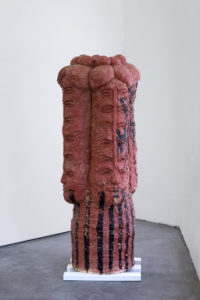
Raven Halfmoon, CADDO DANCING IN BINGER, OKLAHOMA (Craft Contemporary)
The most impressive takeaway from the exhibition is the sheer variety of what potters and ceramicists are doing in the medium today. Clay is so much more than a pot or a mug. It is a way of molding the earth in our image and our imagination; one of the very foundational practices of art. The many ongoing, participatory works in the biennial illustrate that clay is very much a living medium, which is still — and always — being reshaped.
“The Body, The Object, The Other” is on view at Craft Contemporary, 5814 Wilshire Blvd., Mid-Wilshire, through May 10. cafam.org/exhibitions.
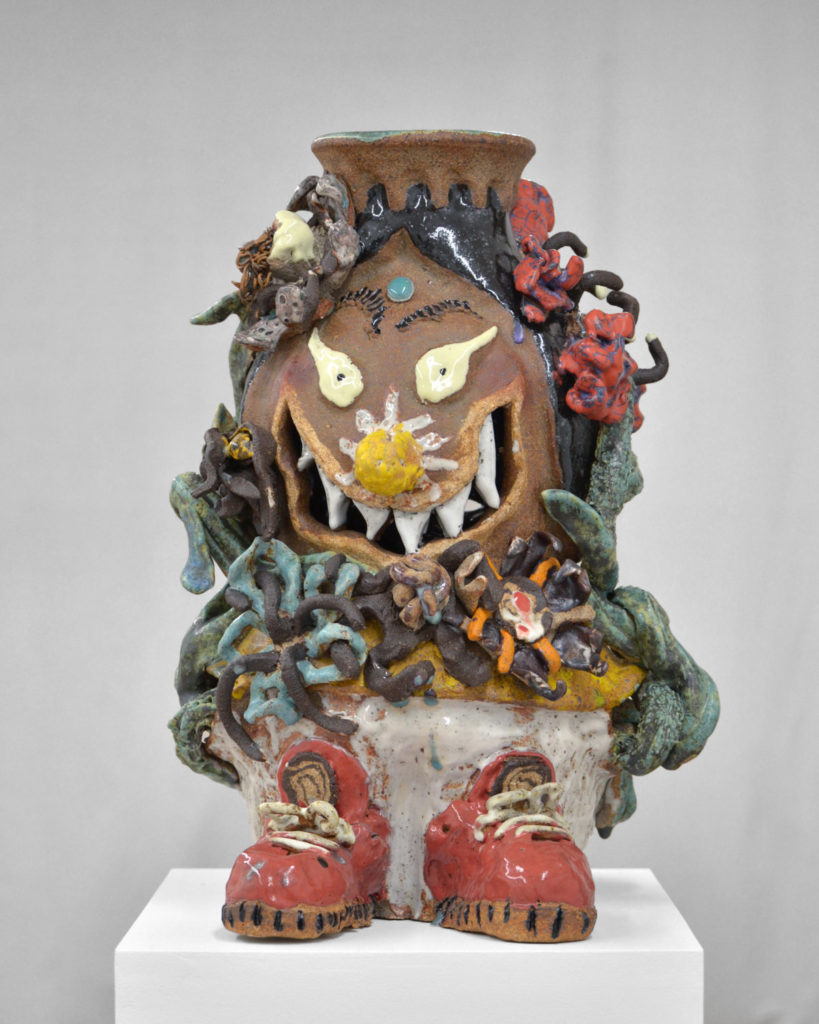
Sharif Farrag, Split Face Jar, 2019 (Craft Contemporary)
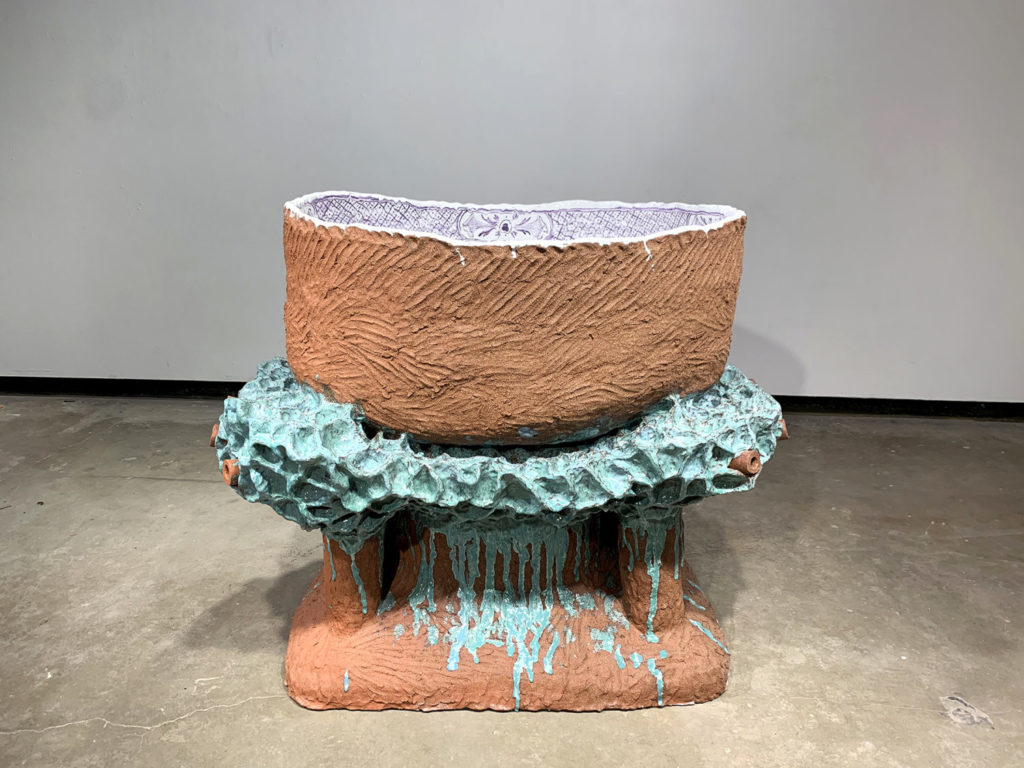
Nicki Green, The Porous Sea (Tub). (Craft Contemporary)
Advertising disclosure: We may receive compensation for some of the links in our stories. Thank you for supporting LA Weekly and our advertisers.

